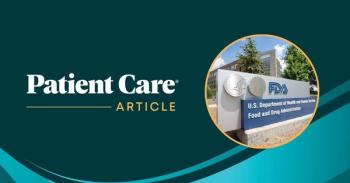
News|Articles|June 3, 2025
New-Onset T2D Tied to Higher Risk of Obesity-Related Cancer: Daily Dose
Author(s)Sydney Jennings
Your daily dose of the clinical news you may have missed.
Advertisement
Patient Care brings primary care clinicians a lot of medical news every day—it’s easy to miss an important study. The Daily Dose provides a concise summary of one of the website's leading stories you may not have seen.
On April 24, 2025, we reported on findings from a new study presented at the 2025 European Congress on Obesity (ECO), held May 11-14 in Malaga, Spain, that investigated the relationship between new-onset type 2 diabetes (T2D) and obesity-related cancers (ORCs).
The study
Researchers conducted a matched cohort control study within UK Biobank of new-onset T2D (defined by date of first reported non-insulin dependent diabetes) compared to unexposed individuals matched (1 participant to 3 controls) on body mass index (BMI), age, and sex. They collected cases of 13 types of obesity-related cancers among the study groups. Adults were followed for a median of 5 years. The primary outcome was the incidence of ORCs, including liver, pancreatic, bowel, endometrial, postmenopausal breast, and others. To reduce bias, the analysis excluded individuals with prevalent diabetes and accounted for potential confounders such as smoking, alcohol consumption, and the increased likelihood of cancer diagnoses shortly after a diabetes diagnosis due to heightened medical surveillance.
There were 23 750 adults with T2D matched with 71 123 adults without T2D. Incident obesity-related cancers occurred in 2431 adults with T2D and 5184 controls.
The findings
Investigators observed that men with T2D had increased risk for obesity-related cancers compared with those without T2D (HR = 1.48; 95% CI, 1.29-1.7; P < .001). Men with T2D had higher risk for hepatocellular carcinoma (HR = 3.59; 95% CI, 2.23-5.77; P < .001), pancreatic cancer (HR = 1.74; 95% CI, 1.14-2.64; P < .01), colorectal cancer (HR = 1.27; 95% CI, 1.02-1.57; P < .05) and kidney cancer (HR = 1.53; 95% CI, 1.08-2.17; P < .05) than men without T2D.
Women with new-onset T2D had increased risk for any obesity-related cancer (HR = 1.24; 95% CI, 1.08-1.42; P < .01), pancreatic cancer (HR = 2.1; 95% CI, 1.27-3.49; P < .01), hepatocellular carcinoma (HR = 4.82; 95% CI, 1.06-21.86; P < .05), thyroid cancer (HR = 2.51; 95% CI, 1.12-5.62; P < .05) and esophageal adenocarcinoma (HR = 6.34; 95% CI, 1.48-27.13; P < .05) compared with women without T2D.
Authors' comments
"Having accounted for key biases found in previous research in this field, and confounding (by adjusting for BMI, smoking, alcohol, and detection-time bias), our findings indicate that new-onset T2DM is associated with some but not all site-specific obesity-related cancers. In turn, the pathways through which T2DM may affect obesity-related cancer require further investigation."
Newsletter
Enhance your clinical practice with the Patient Care newsletter, offering the latest evidence-based guidelines, diagnostic insights, and treatment strategies for primary care physicians.
Advertisement
Latest CME
Advertisement
Advertisement
Trending on Patient Care Online
1
Retatrutide Achieves Up to 28.7% Weight Loss and Marked Knee Pain Reduction in Phase 3 TRIUMPH-4 Trial
2
FDA Clears First At-Home Brain-Stimulation Device for Major Depression
3
Two Global Phase 3 Trials Confirm Efficacy of Rocatinlimab for People With Moderate-to-Severe Atopic Dermatitis
4
ADA Publishes 2026 Standards of Care With Updates to Sections on Technology, Obesity, Cardiometabolic Disease Management
5





















































































































































































































































































